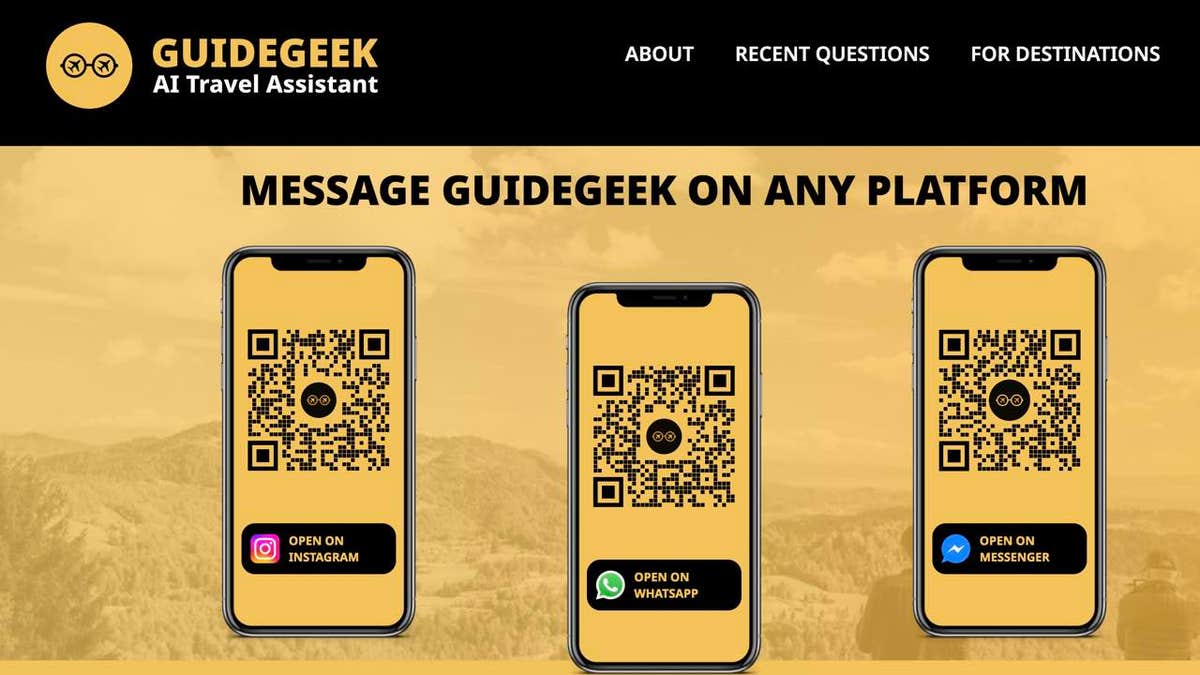Twitter head of trust and safety Ella Irwin has resigned, she confirmed to Reuters, marking the departure of one of Elon Musk’s most important executives at Twitter. Irwin took over from Yoel Roth in November after Roth’s resignation earlier that month. Fortune’s Kylie Robison reported earlier on Thursday that Irwin’s Slack account appeared to be deactivated.
Technology
Twitter head of trust and safety Ella Irwin has resigned
/cdn.vox-cdn.com/uploads/chorus_asset/file/23951434/acastro_STK050_08.jpg)
In her months-long tenure, Irwin oversaw some turbulent cycles at Twitter, including periods where Twitter has come under scrutiny for not doing enough to curb child exploitation. Irwin herself shared internal Twitter information with Bari Weiss as part of the “Twitter Files” reports and reportedly directed banning Twitter accounts that shared information about Musk’s private jet.
Neither Irwin nor Musk has posted about her resignation on Twitter. It’s unclear who might fill the role or if there is even a candidate in mind — perhaps that will be something for incoming CEO Linda Yaccarino to figure out.
Twitter’s press email replied with a poop emoji, as it has since March.

Technology
Even with glitches, planning your next trip with AI is making me rethink travel

With vacation planning, most people fall into two camps: those who love planning and those who hate it.
Artificial intelligence tools like GuideGeek, developed by Matador Network and accessible via Meta’s Messenger app, offer a glimpse into a future where vacation planning is as simple as sending a text.
Yet, as we lean into this new era, it’s clear that these amazingly powerful tools come with their own set of quirks.
CLICK TO GET KURT’S FREE CYBERGUY NEWSLETTER WITH SECURITY ALERTS, QUICK VIDEO TIPS, TECH REVIEWS AND EASY HOW-TO’S TO MAKE YOU SMARTER
Man walking through airport with passport in his hand (Kurt “CyberGuy” Knutsson)
AI travel ‘hallucinations’ can derail a trip
Take, for instance, the phenomenon known as “AI hallucinations.” These occur when the AI, attempting to fill gaps in its knowledge, invents answers. A classic example unfolded when an AI-powered assistant was asked about travel details for “Crete Freeze” instead of “Crete, Greece”. Instead of clarifying the query, the AI crafted a detailed story about a non-existent ice cream parlor in Pittsburgh. While creative, such responses aren’t particularly useful when you’re trying to plan an actual trip.

A couple on vacation (Kurt “CyberGuy” Knutsson)
MORE: 5 GREAT TIPS FOR PLANNING YOUR NEXT TRAVEL GETAWAY
When tiny missed details turn into big trouble
This isn’t an isolated incident. Across the travel industry, AI tools have mistakenly concocted false job histories and even non-existent travel destinations. This tendency can lead to significant travel planning errors, such as suggesting routes that don’t exist or accommodations that are the stuff of fiction.
Why does this happen? AI systems, particularly those based on generative models, strive to provide answers for every query. In doing so, they sometimes create plausible but incorrect information. While these errors are often corrected quickly, they highlight an important aspect of using AI in travel planning: verification is key.

Family at the beach (Kurt “CyberGuy” Knutsson)
MORE: TRAVELING? BRING THIS TRIPLE PROTECTION FOR SAFER ONLINE BANKING
Embracing the new AI travel planning experiment
Matador Network has taken steps to mitigate these errors by introducing stringent checks and balances for GuideGeek. They’ve reduced the occurrence of hallucinations significantly, from a startling 14% down to a more manageable 2%. They achieved this by enhancing the AI’s training and integrating real-time data from reliable sources like Skyscanner and Expedia.
Despite these improvements, the responsibility ultimately falls on the travel planner to double-check all AI-generated plans. When using AI tools like GuideGeek, it’s prudent to verify the details of your itinerary as you would with a travel agent. Check flight schedules, hotel bookings and travel routes against trusted sources.

A family at the beach (Kurt “CyberGuy” Knutsson)
Verify any travel plans, whether from AI or a human expert
Incorporating AI into travel planning requires a balanced approach. While these tools can efficiently handle vast amounts of data and provide quick responses, their current propensity for errors cannot be overlooked. People should approach AI-generated travel plans with a healthy dose of both excitement and skepticism, reviewing and confirming details to avoid potential pitfalls.
WHAT IS ARTIFICIAL INTELLIGENCE (AI)?

Dad and daughter at the beach (Kurt “CyberGuy” Knutsson)
AI trip planning can open doors you never knew to knock on
The process of integrating AI into travel planning is undoubtedly exciting, and it promises a more streamlined and accessible future for travelers.
Matador Network CEO Ross Borden points to the benefits of AI travel planning, saying, “We all know that typical experience of booking travel online – you’ve got 30 browser tabs open and a headache. GuideGeek is a travel genius that makes creating detailed travel plans much faster and more personalized. As the AI learns about you, the recommendations get more tailored to your interests and how you travel.”
I checked AI on one of my favorite Hawaiian destinations for trip-planning ideas known mostly by the locals and deeply entrenched experts. AI was able to identify a really fun area to hike in Kaua’i, along with the little-known secret of how to find parking nearby. I seldom see tourists there, and AI is about to change that. What it didn’t know to tell me is what happens if a common rain shower interrupts the hike, turning the elevated trail into a treacherous trench of mud – something a local or expert may have warned you about.

GuideGeek website (GuideGeek)
MORE: THE BEST TRAVEL GEAR FOR 2024
How to plan travel with AI using GuideGeek
Unlike other travel guides, if you have Instagram, Facebook Messenger or WhatsApp, you do not need to download a separate app to use GuideGeek. All you need to do is go to the main GuideGeek website. In the app you likely have already downloaded, you can either click the link or scan the QR code, which will launch GuideGeek on your designated app.

GuideGeek screens on Instagram (GuideGeek)
MORE: 5 GREAT TIPS FOR PLANNING YOUR NEXT TRAVEL GETAWAY
Chat with GuideGeek: Your personal, nonhuman AI travel assistant on Instagram
For instance, if you click “Open on Instagram,” GuideGeek will begin a direct message on the Instagram account you have on your device. You can ask any sort of travel question, and it’ll respond with an answer as a message.
The best part is that once you have opened it, you can continue to dialogue with GuideGeek for other areas of your travel needs – just don’t delete the chat window with GuideGeek. Of course, if you do, it is just as easy to restart another message with GuideGeek.

GuideGeek AI on Facebook (GuideGeek)
MORE: BEST TRAVEL ADAPTERS OF 2024
Planning travel with GuideGeek vs Google
What’s the difference between using GuideGeek instead of googling your questions? Targeted answers, so you’re not digging around many websites for that one piece of travel information you’re looking for. Additionally, the use of the Matador Network is hooking you up with an established online travel publication located in San Francisco with more than 80 million monthly visitors and 16 million social media followers.
Kurt’s key takeaways
With so much travel information online, it can be difficult to parse through all the data. And sometimes, too much information can actually create decision fatigue. Instead of trying to cobble together an itinerary from your neighbors, family, friends and the internet, you can use AI to pull together an exciting trip – just be sure to check each little detail for accuracy before packing your bags.
Have you utilized AI to help start or finish travel planning? If you could have a travel agent available on demand, would you use it? Let us know by writing us at Cyberguy.com/Contact.
For more of my tech tips and security alerts, subscribe to my free CyberGuy Report Newsletter by heading to Cyberguy.com/Newsletter.
Ask Kurt a question or let us know what stories you’d like us to cover.
Answers to the most asked CyberGuy questions:
Copyright 2024 CyberGuy.com. All rights reserved.
Technology
Fujifilm’s new X-T50 has a film simulation dial — and a questionable price
/cdn.vox-cdn.com/uploads/chorus_asset/file/25450606/xt50crop.jpg)
Fujifilm has just announced a pair of new cameras at the company’s X Summit Sydney event. There’s the medium format GFX100S II, which frankly falls outside my scope of interest (and budget). The more mainstream of the two is the X-T50, which is a followup to — but not a replacement for — the X-T30 II, which will remain in Fujifilm’s lineup moving forward.
The X-T50 is a hodgepodge of the camera maker’s new and old tech. Let’s start with the new. The body has a fresh, more rounded shape that’s unlike anything else in the X-Series lineup, and there’s a film simulation dial right on the top, a first for any Fujifilm camera. You get several preset film sims to circle between and can choose your own for the three customizable slots — though you can’t set these to custom film recipes. Still, the dial goes to show what a vital part of Fujifilm’s appeal that these simulations have become over the years.
The X-T50 includes the same 40-megapixel sensor as the X-T5 and X-H2, plus the accompanying fifth-gen processor, so this camera offers a substantial increase in both resolution and autofocus performance compared to the X-T30 II. And it also gains a 7-stop in-body image stabilization system; the far less expensive X-T30 II lacks IBIS altogether. Continuous shooting is limited to 8fps with the mechanical shutter, whereas the X-T5 and X-H2 can both hit 15fps. For storage, there’s a single UHS-II SD card slot. Video performance has also been dialed up significantly:
But there are still some older hardware elements to this camera. For one, you’re stuck with the last-generation battery that isn’t nearly as long-lasting. And disappointingly, the electronic viewfinder is also unchanged from the X-T30 II. You do at least get the same 3-inch, 1.84-million dot rear LCD with two-way tilt as on the X-T5.
The X-T50 slots into a curious spot when it comes to pricing. If you’re buying the body alone, it’s $1,399.99, which is $500 more than the X-T30 II. But again, Fujifilm doesn’t consider this a replacement for that camera. It gets its own unique place in the lineup, which now looks like this:
Some of the upgrades that come with stepping up to the X-T5 include water resistance, a nicer EVF, dual SD slots, better continuous shooting performance, and the newer battery with superior endurance.
Fujifilm’s kit lens is also getting a notable revamp. The company’s well-regarded 18-55mm glass is being replaced by a new, lighter 16-50mm f/2.8 – 4.8 lens that now features water resistance. (The X-T50 itself doesn’t have any official water resistance.) Fujifilm believes this lens does a better job resolving that 40MP sensor compared to the ancient 18-55mm. It’s also a constant length, so all the zooming now happens internally without the lens having to extend. Sold on its own, the new 16-50mm lens costs $699. The combined X-T50 kit runs $1,799.99, so you’re only paying $400 for the lens in that scenario.
Technology
Freak robot made in China can learn, think, work like humans

Sometimes, you have to see it to believe it.
And in rare cases, like this one, it freaks out observers watching. In the ever-expanding world of humanoid robots, a new star is rising, and its name is Astribot.
The Chinese company’s latest creation, the S1 model, is turning heads with its astonishing speed and precision.
CLICK TO GET KURT’S FREE CYBERGUY NEWSLETTER WITH SECURITY ALERTS, QUICK VIDEO TIPS, TECH REVIEWS AND EASY HOW-TO’S TO MAKE YOU SMARTER
S1 AI-powered robot (Astribot)
Astribot S1: How it’s breaking speed records
Imagine a robot that can move at a blistering pace of approximately 32.8 feet per second and handle a payload of 22 pounds per arm. That’s Astribot’s S1 for you. It’s like watching a superhero in action. Only this one is made of wires and metal.
The S1’s capabilities are not just impressive; they’re record-setting. The robot’s dexterity is showcased in a video where it performs tasks with such finesse that it can delicately shave a cucumber.
WHAT IS ARTIFICIAL INTELLIGENCE (AI)?

S1 AI-powered robot (Astribot)
It can even engage in the art of calligraphy.

S1 AI-powered robot (Astribot)
That’s not all. It can also open and pour wine and flip a sandwich in a frying pan.

S1 AI-powered robot (Astribot)
And for those who hate ironing and folding laundry, the S1 does that, too.

S1 AI-powered robot (Astribot)
MORE: ELECTRIC HUMANOID ROBOT POISED TO SHAKE UP THE JOB MARKET
What sets the Astribot S1 apart from other robots?
The S1’s ability to mimic human movements sets it apart from other robots. This robot is a learner, an imitator and a potential pioneer in robotics. The questions it raises are as intriguing as its abilities. Does it have a lower half? Can it walk, or is it destined to remain stationary? These are the mysteries that have yet to be answered.

S1 AI-powered robot (Astribot)
MORE: THE SHAPE-SHIFTING UNDERWATER ROBOT PIONEERING THE DEPTHS OF THE SEA
The backstory of the Astribot S1 robot
Founded in 2022 in Shenzhen, the Astribot maker Stardust Intelligence has roots that trace back to the Tencent Robotics Laboratory, Baidu, and the Hong Kong Polytechnic University, with its founder, Lai Jie.
The S1 took a year to evolve and is expected to hit the market later in 2024. The robot’s name, inspired by the Latin proverb “Ad astra per aspera,” reflects its journey and commitment to AI robot technology.

S1 AI-powered robot (Astribot)
MORE: HOW AI IS PAVING THE WAY TO SMOOTHER STREETS USING AUTONOMOUS ROBOTS
Kurt’s key takeaways
As Astribot prepares to launch the S1 robot, the world watches with bated breath. Will it revolutionize the way we think about humanoid robots? Will it outshine its competitors and set a new standard in the industry? Can the U.S. keep us with this Chinese technology? Only time will tell. But one thing is certain: the robot wars have begun and Astribot’s S1 is leading the charge.
As humanoid robots become more adept at tasks traditionally performed by humans, how do you feel about the potential impact on employment and job security? Let us know by writing us at Cyberguy.com/Contact.
For more of my tech tips and security alerts, subscribe to my free CyberGuy Report Newsletter by heading to Cyberguy.com/Newsletter.
Ask Kurt a question or let us know what stories you’d like us to cover.
Answers to the most asked CyberGuy questions:
Copyright 2024 CyberGuy.com. All rights reserved.
-

 News1 week ago
News1 week agoCompass Direct LLC’s 2024 Registration in North Carolina
-

 News1 week ago
News1 week agoMan, 75, confesses to killing wife in hospital because he couldn’t afford her care, court documents say
-

 Politics1 week ago
Politics1 week agoRFK Jr said a worm ate part of his brain and died in his head
-

 World1 week ago
World1 week agoConvicted MEP's expense claims must be published: EU court
-

 World1 week ago
World1 week agoPentagon chief confirms US pause on weapons shipment to Israel
-

 Politics1 week ago
Politics1 week agoBiden takes role as bystander on border and campus protests, surrenders the bully pulpit
-

 Politics1 week ago
Politics1 week agoHere's what GOP rebels want from Johnson amid threats to oust him from speakership
-

 World1 week ago
World1 week agoPro-Palestine protests: How some universities reached deals with students













